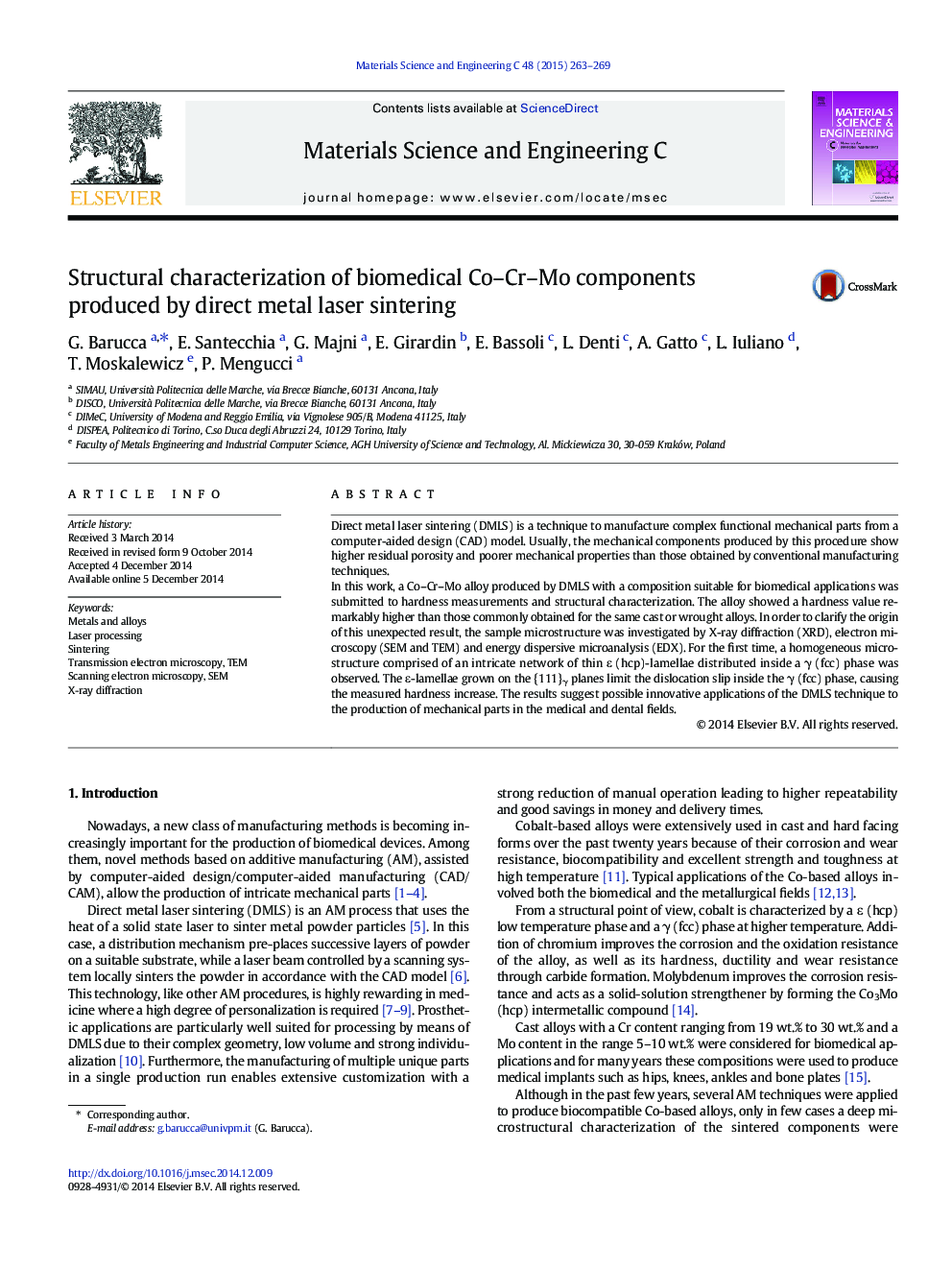| Article ID | Journal | Published Year | Pages | File Type |
|---|---|---|---|---|
| 1428456 | Materials Science and Engineering: C | 2015 | 7 Pages |
•Samples of a Co–Cr–Mo biomedical alloy were produced by direct metal laser sintering.•Hardness values unexpectedly high were attributed to a peculiar microstructure.•Fine lamellae of the ε-phase alternated to the γ-phase were observed for the first time.•A nucleation and growth model for the observed microstructure is proposed.
Direct metal laser sintering (DMLS) is a technique to manufacture complex functional mechanical parts from a computer-aided design (CAD) model. Usually, the mechanical components produced by this procedure show higher residual porosity and poorer mechanical properties than those obtained by conventional manufacturing techniques.In this work, a Co–Cr–Mo alloy produced by DMLS with a composition suitable for biomedical applications was submitted to hardness measurements and structural characterization. The alloy showed a hardness value remarkably higher than those commonly obtained for the same cast or wrought alloys. In order to clarify the origin of this unexpected result, the sample microstructure was investigated by X-ray diffraction (XRD), electron microscopy (SEM and TEM) and energy dispersive microanalysis (EDX). For the first time, a homogeneous microstructure comprised of an intricate network of thin ε (hcp)-lamellae distributed inside a γ (fcc) phase was observed. The ε-lamellae grown on the {111}γ planes limit the dislocation slip inside the γ (fcc) phase, causing the measured hardness increase. The results suggest possible innovative applications of the DMLS technique to the production of mechanical parts in the medical and dental fields.
